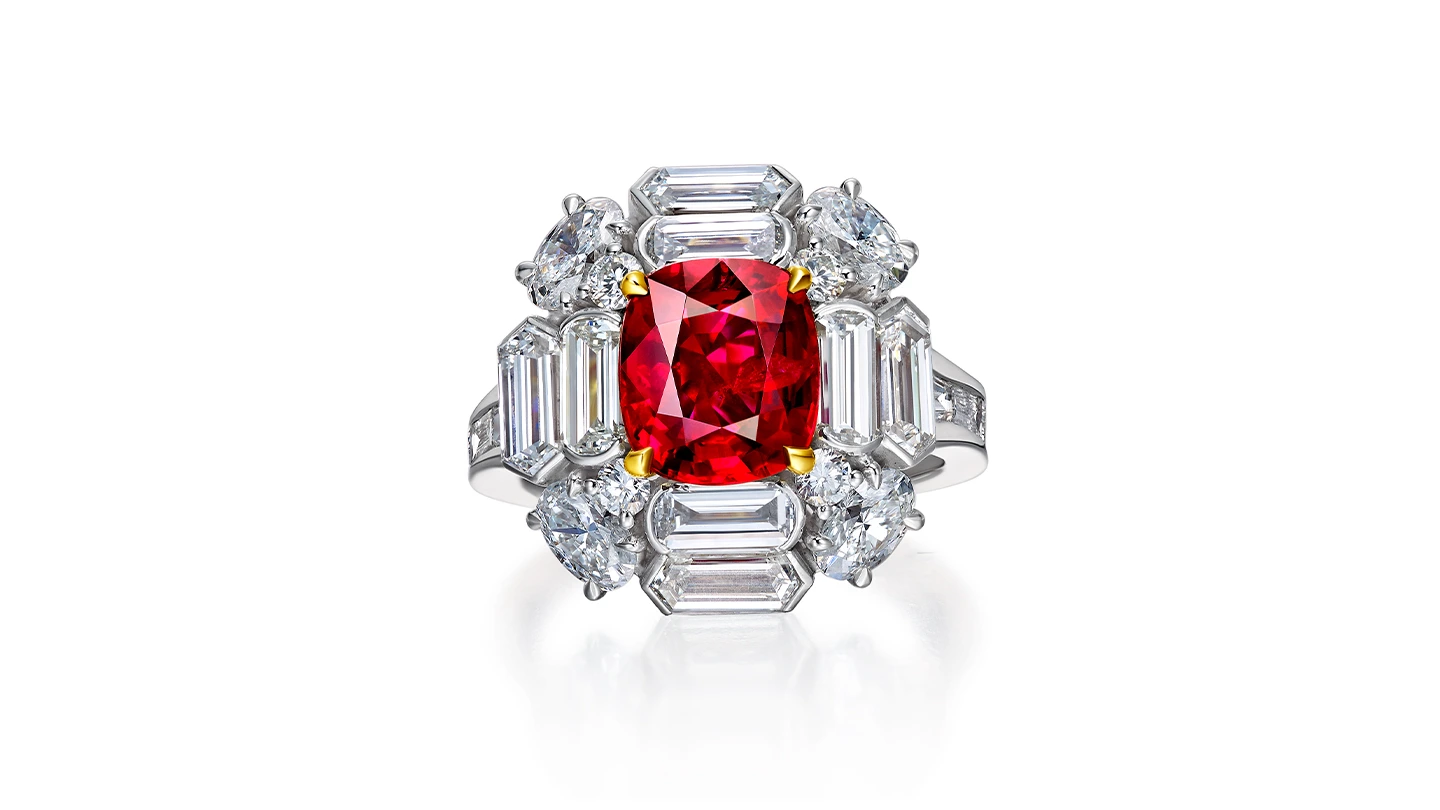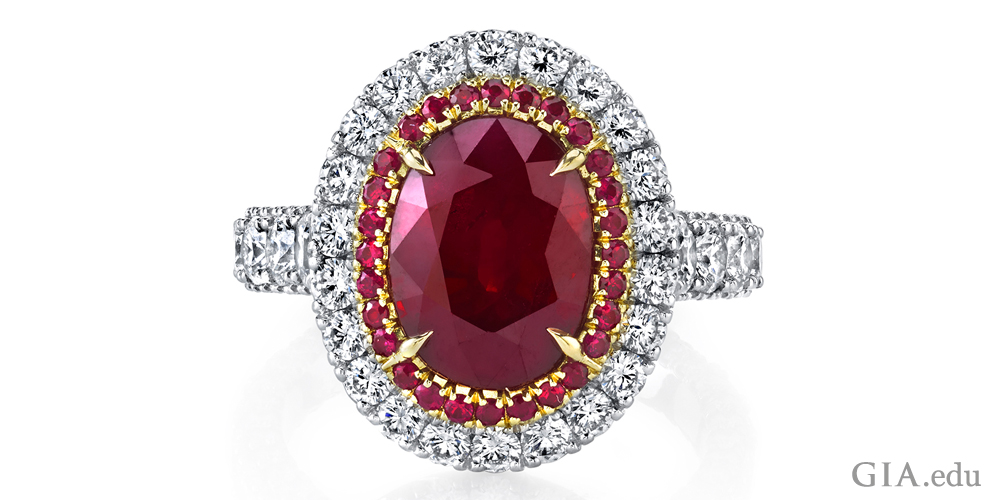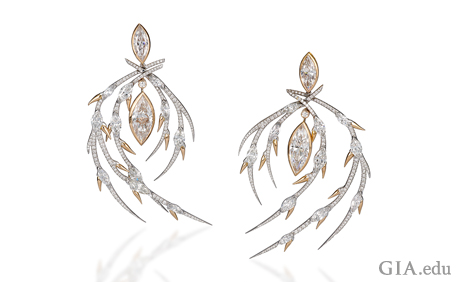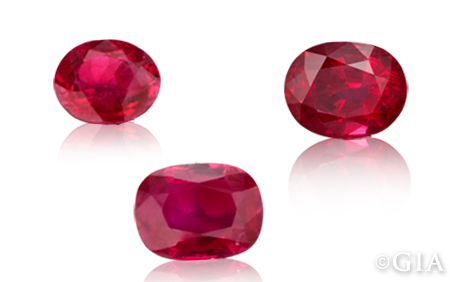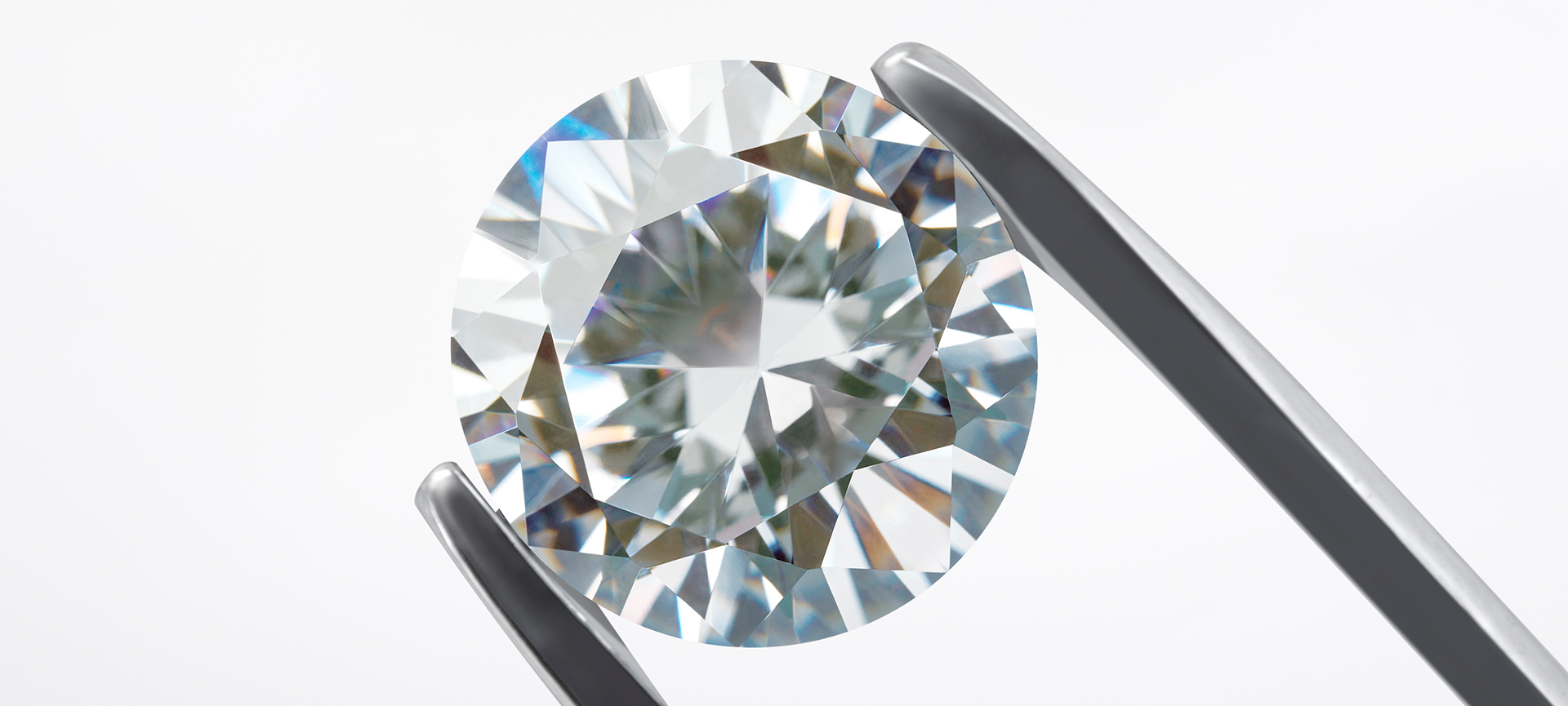Ruby is the July birthstone – and it’s one of the most coveted of gems. Called the “king of gems” in ancient India, today it can command the highest per-carat price of any colored stone. Here’s what you need to know about this beautiful gem.
In this post, we cover:
Gemological Properties of Ruby
Ruby History & Lore
Where Ruby Comes From
Qualities to Look for in Rubies
Ruby Treatments, Care & Cleaning
July Birthstone: Gemological Properties of Ruby
Ruby, the July birthstone, is a variety of the mineral corundum that contains trace amounts of the element chromium, which causes its color. The more chromium present, the stronger the color red. Chromium can also cause red fluorescence, which adds to the intensity of the color. Fluorescence is visible light temporarily emitted by some gem materials when they are exposed to high-energy sources such as ultraviolet light (as in sunlight), X-rays or lasers.
Some rubies form in marble, when heat and pressure act on minerals in limestone. These rubies tend to be highly prized, as they have a higher concentration of chromium and little iron, which is an ideal recipe for a bright red color. They also tend to be highly fluorescent.
Other rubies are found in basalt, which forms when molten lava cools and solidifies. Basalt-hosted rubies typically have significantly more iron than marble-hosted rubies and thus are darker. A higher iron content can also mask the fluorescence, eliminating that extra glow of red color.
Still other rubies form in an amphibole-bearing gneiss (a coarse-grained metamorphic rock). These rubies tend to have good color, though they have more iron than the marble-hosted stones and less than those from basalt.
Gemologists love the July birthstone because synthetic ruby was used to create the first laser in 1960. They also consider chromium to be the “rock star” of trace elements.
Consumers love ruby for its intense red color and because it’s a 9 on the Mohs scale of hardness, just below diamond. As such, it is a very durable stone that holds up well to daily wear in rings and other jewelry.

A look at these earrings featuring 8.16 carats of ruby, 1.78 carats of marquise diamonds, and 1.69 carats of round diamonds shows why we are enchanted by the gem. Courtesy: Omi Privé
July Birthstone: Ruby History & Lore
A prized gem like ruby naturally comes with many attributes. Because it resembles the color of blood, ancients believed it could stop hemorrhaging. The July birthstone was also thought to cure inflammatory diseases and soothe anger. Burmese warriors believed it made them invincible in battle. Medieval Europeans maintained that rubies bestowed health, wisdom, wealth and success in love.
In addition to being the July birthstone, ruby is traditionally given for the 15th and 40th wedding anniversaries.
The Harry Winston Ruby Slippers are a famous example of the July birthstone in a spectacular setting. To commemorate the 50th anniversary of the movie “The Wizard of Oz,” the House of Harry Winston fashioned a pair of red slippers featuring 4,600 rubies weighing an estimated 1,350 carats. When they were created in 1989, they were valued at $3 million.

Harry Winston’s famed ruby slippers were exhibited at GIA in December 1997. Some 4,600 rubies weighing an estimated 1,350 carats glitter in the slippers; another 50 carats of diamonds accent the unique creation. Courtesy: Harry Winston
July Birthstone: Where Ruby Comes From
Our search for the July birthstone starts in Myanmar (formerly known as Burma). For more than five centuries, the Mogok area in Myanmar has produced some of the finest rubies – vibrant red beauties softened by light-scattering inclusions and a glowing red fluorescence. The region is a place of weathered marble and ancient Buddhist temples.

Golden spires of a monastery near Mogok are flashes of color along the mountainside. Photo: Robert C. Kammerling/GIA
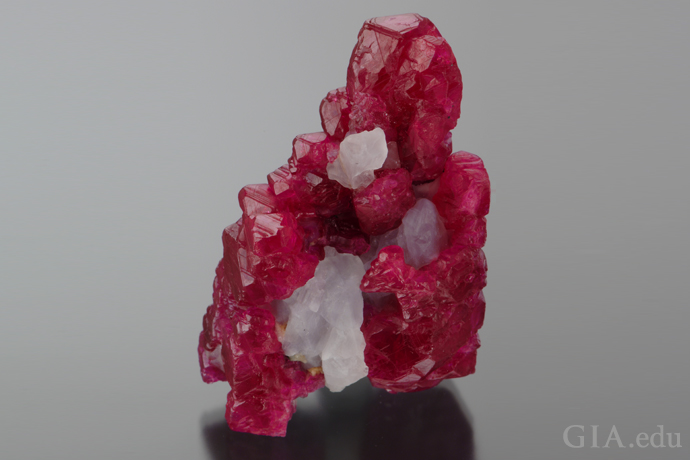
These ruby crystals intertwined with their matrix rival the beauty of finished gems from Mogok. Photo: Robert Weldon/GIA. Courtesy: Bill and Jeanne Larson
Vietnam is another important source for marble-hosted rubies. The Luc Yen region, where rainforest-clad mountains rise over broad paddy fields, produces rubies of red to purplish red color. Today, artisanal miners work the soil in hopes of finding a gem that will change their fortunes.

A small village sits at the base of the mountains in the ruby-bearing Luc Yen region. Photo: Vincent Pardieu/GIA
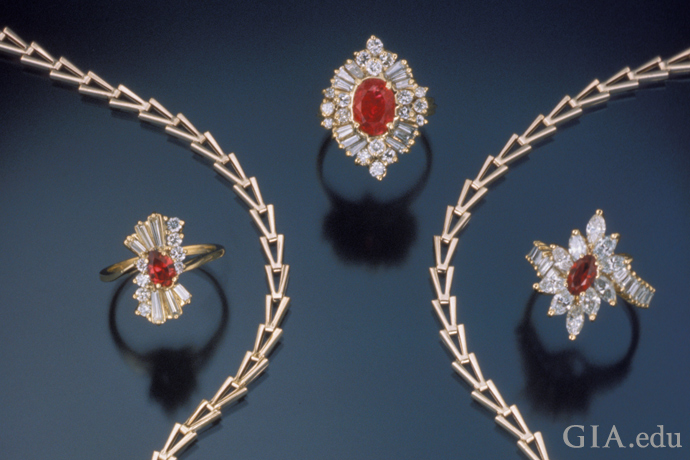
Rubies from Luc Yen and other locales in Vietnam star in these four rings and necklace. Photo: Shane McClure/GIA

This fine 4.04 carat (ct) ruby came from Mozambique, the pre-eminent source of commercial and fine rubies. Photo: Robert Weldon/GIA. Courtesy: Evan Caplan, GemFields
Mozambique is an important new, amphibole-related source for the July birthstone. This African nation is home to the prolific mines at Montepuez. Rubies found there have been compared to the famed gems of Mogok.
For many years in the late 1900s, the basalt-related ruby deposits along the border between Thailand and Cambodia were the major source of rubies in the marketplace. Other important producers include Sri Lanka, Tanzania and Madagascar.

Rubies from Madagascar are a bright, slightly orangy red. Photo: Robert Weldon/GIA. Courtesy: Allerton Cushman & Co., Sun Valley, Idaho
July Birthstone: Qualities to Look for in Rubies
- Color: Color is the most important quality factor for the July birthstone. The finest rubies have a pure, vibrant red to slightly purplish red color. A color that’s too orangy or too purplish is considered less desirable. The highest-quality rubies have vivid color saturation that is not too dark.
- Clarity: People in the trade expect rubies to have at least some inclusions, because inclusion-free rubies are rare. The impact of inclusions on the value of a stone depends on their visibility. Obvious inclusions or inclusions that reduce transparency or brightness can lower a ruby’s value.
- Cut: A ruby’s crystal shape dictates its suitability for certain cuts. Ruby crystals often have a flat tabular hexagonal shape, but crystals from some sources may be elongate.
- Carat weight: Rubies are available in a wide range of sizes, but fine-quality rubies over a carat are rare and, not surprisingly, very expensive.

This 5.00 ct oval ruby is all the more radiant set in 18K rose gold and encircled by 2.53 carats of round diamonds in the halo and band. Courtesy: Omi Privé
July Birthstone: Ruby Treatments, Care & Cleaning
Using warm soapy water is a safe option to clean ruby, the July birthstone. Ultrasonic and steam cleaners are usually safe for untreated, heat-treated and lattice diffusion–treated stones. Fracture-filled, cavity-filled or dyed stones should only be cleaned with a damp cloth.
Rubies are often heat treated to remove purplish coloration, leaving a purer red. The process can also remove “silk” (minute needle-like inclusions) that can cause a gem to appear lighter in tone and be more opaque. The trade typically accepts heat treatment to enhance color, as the treatment is stable to normal conditions of wear and care.
Lattice diffusion is a technique whereby heat and chemicals are used to diffuse a specific element into a gem to change its color. This treatment, too, is typically stable to normal wear and care.
Fracture filling is when a substance is introduced into surface-reaching fissures to make them less visible and thus improve the gem’s appearance. Common fillers include glass and glass-like substances, polymers and resins, and oils.
A high-lead-content glass is often used to fill fractures in rubies and thus improve their apparent clarity. There are many of these glass-filled rubies in the market, and in some cases the glass literally holds together a highly fractured gem. The glass can be damaged through contact with a variety of chemicals. Even relatively mild substances like concentrated lemon juice can etch the filler.
Dyeing with colored oils and filling small surface fissures with epoxies are other treatments. However, they are not permanent. These treatments need special care.
Always ask if your ruby has been treated before you buy. The Federal Trade Commission requires disclosure of treatments that affect a gemstone’s perceived value. A GIA Identification Report is important in identifying if a stone is natural or synthetic and whether it has been treated in any fashion.

Reminiscent of the geometric shapes used in Art Deco–era jewelry, this diamond and ruby bracelet shimmers with 20.56 carats of cabochon-cut rubies from Tanzania. Photo: Kevin Schumacher/GIA
Whether or not you have a July birthstone, owning a beautiful ruby is a rare and precious thing. And if you love red gems in general, check out our Red Gemstone Buying Guide – Part 1 and Red Gemstone Buying Guide – Part 2 for some striking alternatives to ruby.
